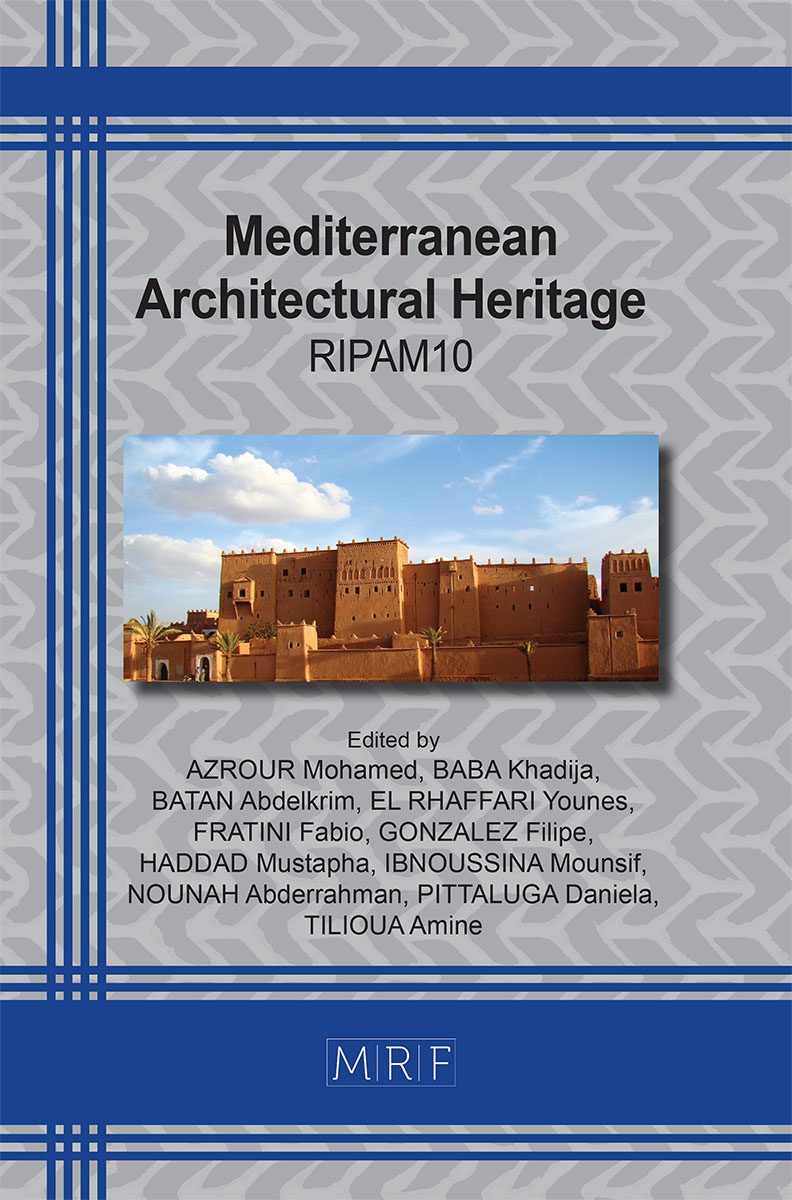Traditional Earth Architecture as a Tool for Sustainability and Adaptation to Climate Change of Heat and Cold Extremes
Khalid EL HARROUNI, Hassane KHARMICH, Khadija KARIBI
download PDFAbstract. The design of sustainable architectural and urban spaces should be one of the essential pillars of any strategy for sustainable development and adaptation to climate change, particularly for the population living in rural areas who suffer from cold during winter and heat during the summer. This paper focuses on the traditional earth-based materials buildings and tries to see to what extent the building envelope could be improved to achieve and further confirm the objectives: improving thermal comfort and reducing heat loss through the traditional envelope (walls, roof, glazing, low floor). The paper is based on bioclimatic architecture principles and adopts passive energy efficiency in two different climatic contexts, hot and cold. The analysis of the approach method includes three issues: 1) the bioclimatic analysis of the environment/site including the building ambiance; 2) thermal comfort; and 3) thermal performance. The methodological tools are based on the bioclimatic analysis of the site and the ambiance for the first two issues; and the prescriptive approach of Moroccan thermal regulation for the third issue. The built environment constructed with traditional materials, once improved, is able to prove that it is respectful of the environment and without any risk to the user’s health. In addition, this traditional architecture confirms the objectives of sustainable development.
Keywords
Bioclimatic Architecture, Traditional Materials, Earth, Bioclimatic Tools, Thermal Comfort
Published online 3/15/2024, 8 pages
Copyright © 2024 by the author(s)
Published under license by Materials Research Forum LLC., Millersville PA, USA
Citation: Khalid EL HARROUNI, Hassane KHARMICH, Khadija KARIBI, Traditional Earth Architecture as a Tool for Sustainability and Adaptation to Climate Change of Heat and Cold Extremes, Materials Research Proceedings, Vol. 40, pp 218-225, 2024
DOI: https://doi.org/10.21741/9781644903117-23
The article was published as article 23 of the book Mediterranean Architectural Heritage
![]() Content from this work may be used under the terms of the Creative Commons Attribution 3.0 license. Any further distribution of this work must maintain attribution to the author(s) and the title of the work, journal citation and DOI.
Content from this work may be used under the terms of the Creative Commons Attribution 3.0 license. Any further distribution of this work must maintain attribution to the author(s) and the title of the work, journal citation and DOI.
References
[1] Royaume du Maroc, Bulletin Officiel, Décret N° 2.13.874 Approuvant le Règlement Général de Construction Fixant les Règles de Performance Energétique des Constructions et Instituant le Comité National de l’Efficacité Energétique dans le Bâtiment. 6306 (2014) 4256-4269.
[2] ISO 7730, Ambiances Thermiques Modérées – Détermination des Indices PMV et PPD et Spécifications des Conditions de Confort Thermique, AFNOR, Paris, 1994.
[3] B. Givoni, Comfort, climate analysis and building design guidelines, in: Energy and Buildings Vol. 18, 1992, pp. 11-23. https://doi.org/10.1016/0378-7788(92)90047-K
[4] S.V. Szokolay, Introduction to Architectural Science. The Basis of Sustainable Design. Architectural Press, 2008. https://doi.org/10.4324/9780080878942
[5] O.H. Koenigsberger, T.G. Ingersoll, A. Mayhew, S.V. Szokolay, Manual of Tropical Housing and Building: Climatic Design. India: Orient Longman, 1973.












